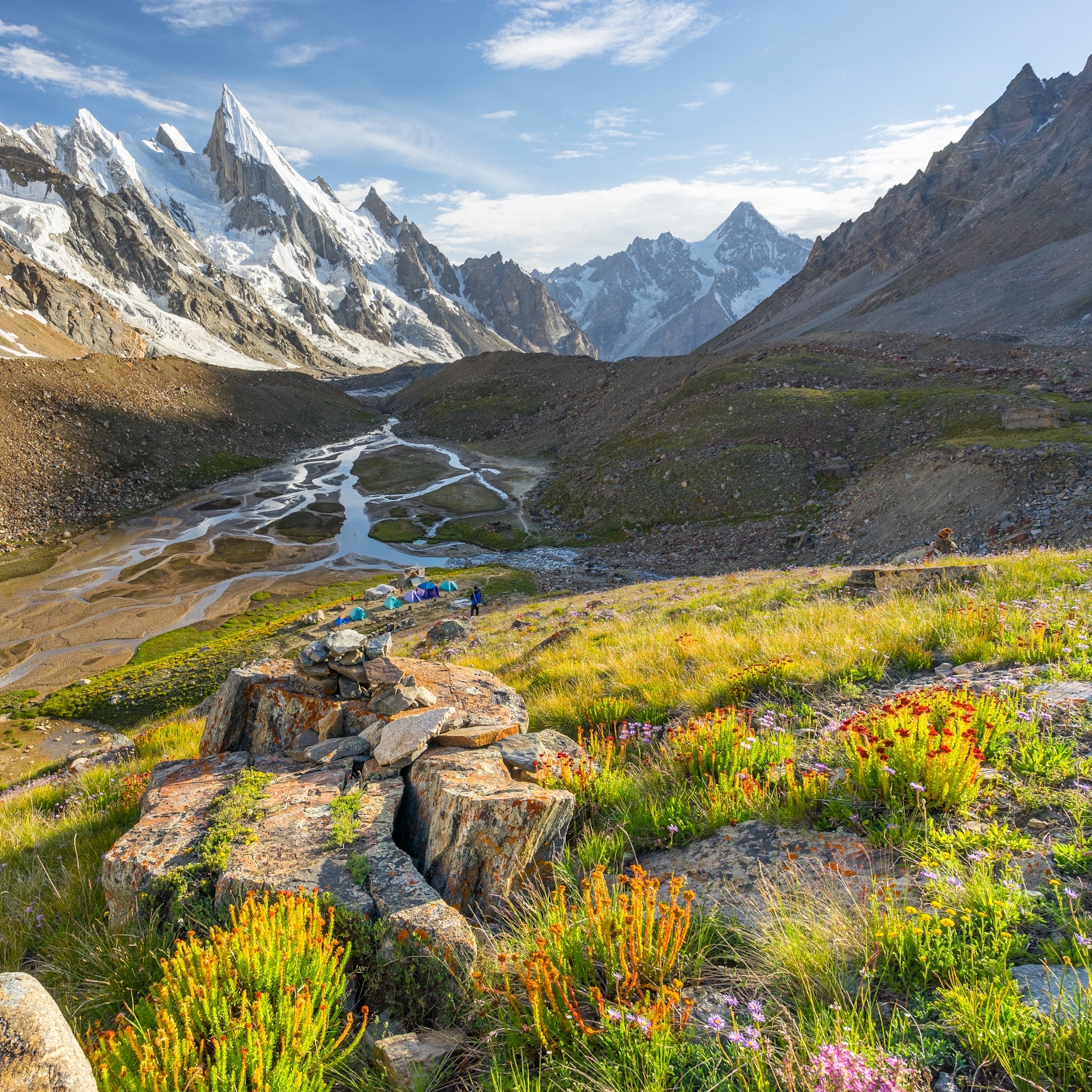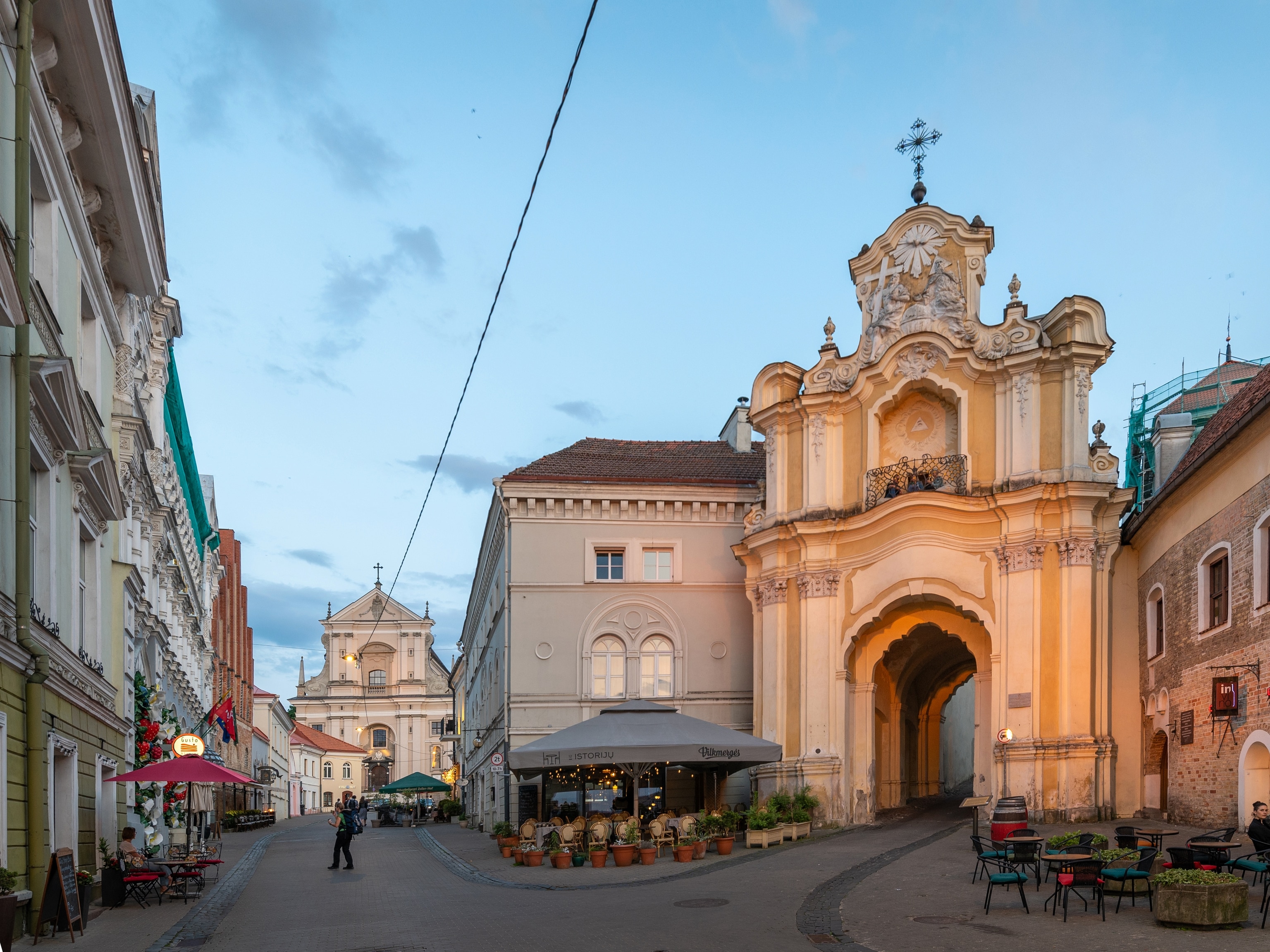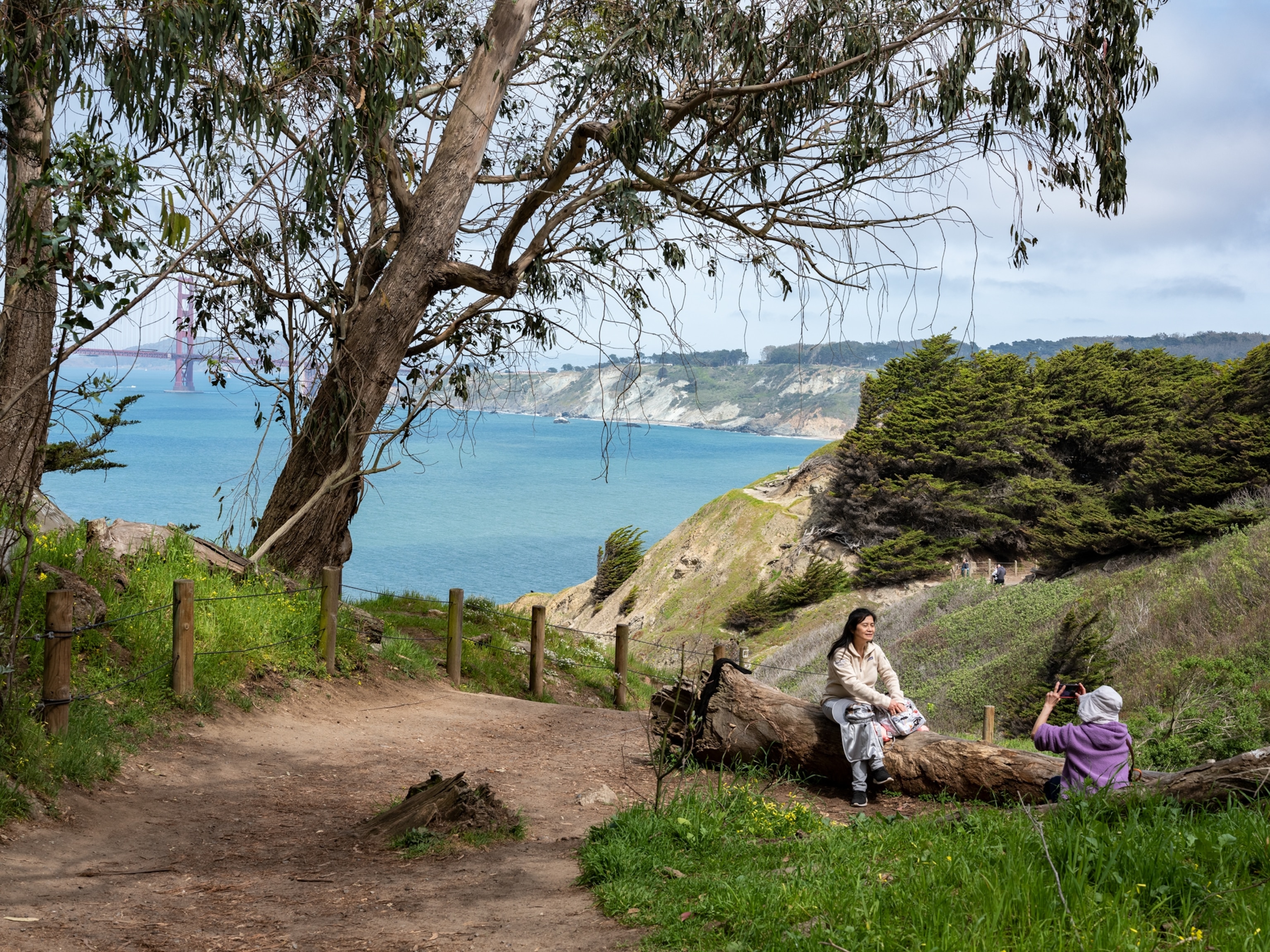
You can walk across San Francisco in a day. Here’s how.
From city streets to natural wonders, the epic 16.5-mile Crosstown Trail isn’t your average hike.
San Francisco’s skyscrapers soared to my right; a grid of boxy homes met the ocean to my left. Straight ahead, the tip of the Golden Gate Bridge poked out from the afternoon fog washing over the Marin headlands. Such an iconic panorama, and I was only halfway through my day hike across the city.
The 16.5-mile Crosstown Trail traverses San Francisco diagonally, from the marshy southeastern corner to the northwestern tip of the peninsula, threading together national, state, municipal, and community parks. Consisting of well-trodden dirt paths, winding walkways, and city streets, it is the fruit of volunteers’ labor—ordinary San Franciscans coming together to define its route and, in some places, physically clearing paths in order to connect segments of existing trails.

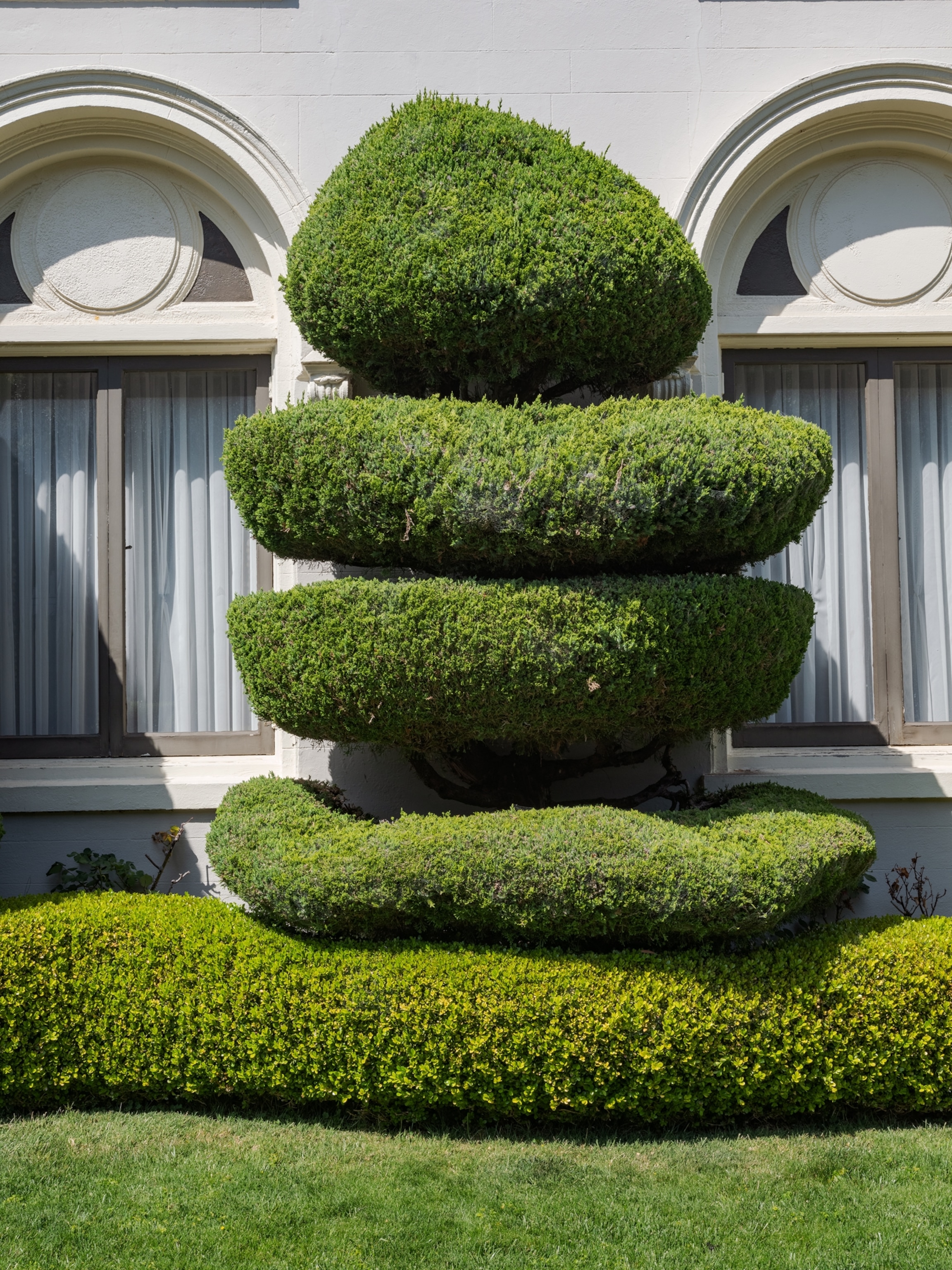
Befitting a city known for its hills and microclimates, the trail covers an elevation gain of over 2,000 feet, and temperature differences that can fluctuate some 30 degrees. In short, a cross section of San Francisco.
Equipped with a PDF map—complete with a list of bathrooms along the way—and a free app, I first took to the trail in the summer of 2019, shortly after it was inaugurated. Since then, I’ve returned for shorter walks. Some parts closed during the early months of the COVID-19 pandemic, but, with the exception of a parking lot closure, the Crosstown Trail is fully open.
But on that brilliant July morning of my first venture, I set off to find out what an urban hike actually means. How is it any different from, say, going to the corner store to buy a bag of chips?
(Car-free streets are popping up in cities around the world)
A mix of the natural and the urban
I started at the Candlestick Sunrise Point campsites in the southeastern corner of the city. With its unobstructed views of the San Francisco Bay, Candlestick Point State Recreation Area draws windsurfers and birders on weekends. But early in the day, only hobbyist fishers were on the pier.
“How’s the catch?” I asked an elderly woman, peering into her white bucket. She only shrugged, eyes on the line.

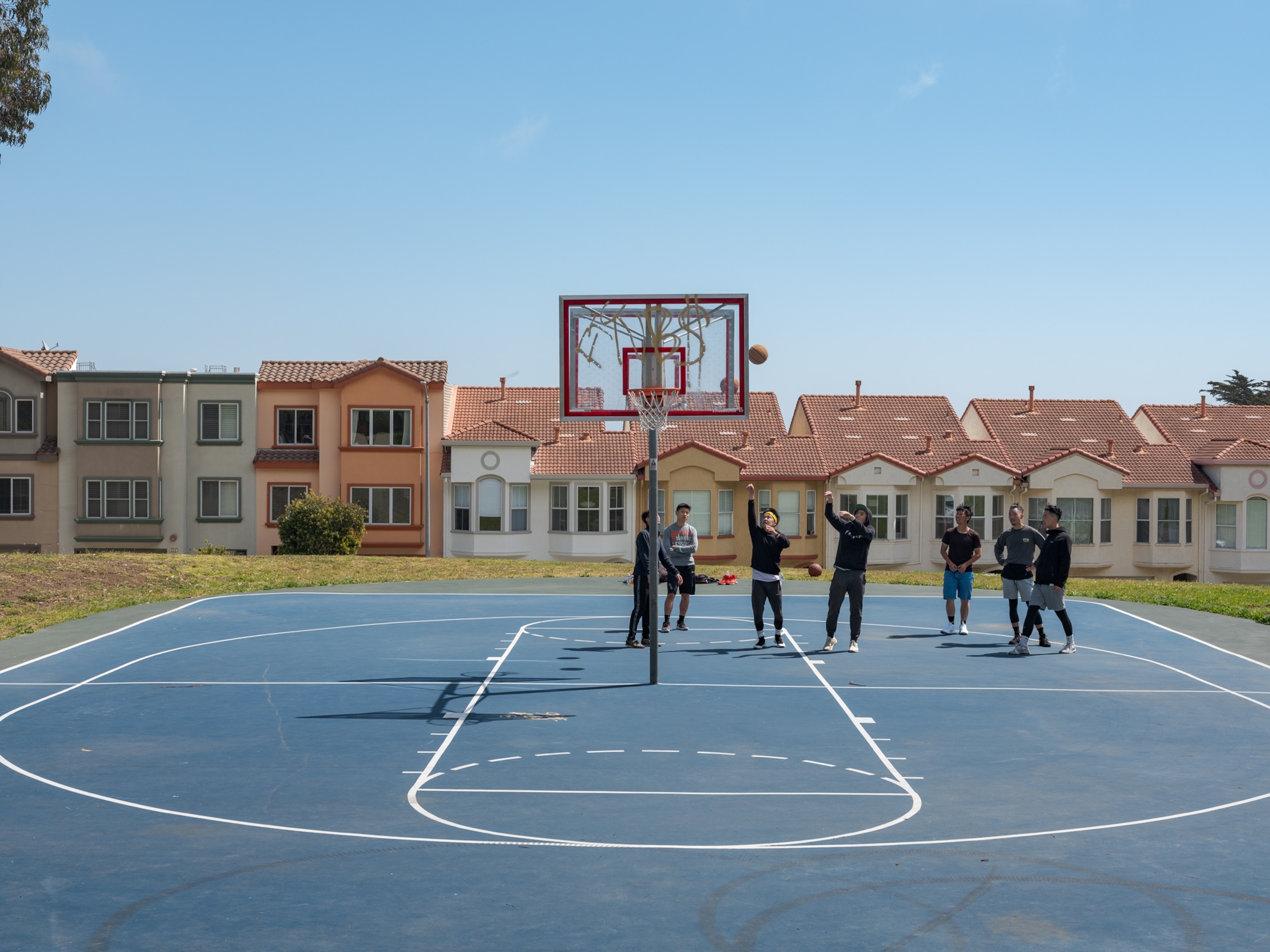
Although the storied—and notoriously windswept— Candlestick Park baseball stadium was demolished in 2015 to make way for office towers and apartment buildings, the swath of land where the ballpark once stood remained empty. I walked the dirt path, calm San Francisco Bay waters lapping at the rocky shore.
Unlike Boston’s Emerald Necklace, a greenway integrating seven miles of parks, San Francisco’s Crosstown Trail alternates between the natural and the urban. After a little over a mile of quiet, the path spat me out into the jarringly busy city scene of cars, business signs, and light rail trains. The traditionally Black neighborhood of Visitacion Valley has seen an influx of Asian immigrants, and main drag Leland Avenue was dotted with shop signs in Chinese as well as English.
Drawn to the “Welcome, Crosstown Trail walkers” sign, I stopped for coffee and a scone at Mission Blue cafe. “There wasn’t a neighborhood coffee place, so I opened one,” said owner Kellie McCord. The neighborhood coffee shop doubles as a boutique selling items from local artisans. “Don’t forget to grab a banana,” she said, pointing at the basket of free fruit set aside for the urban hikers.
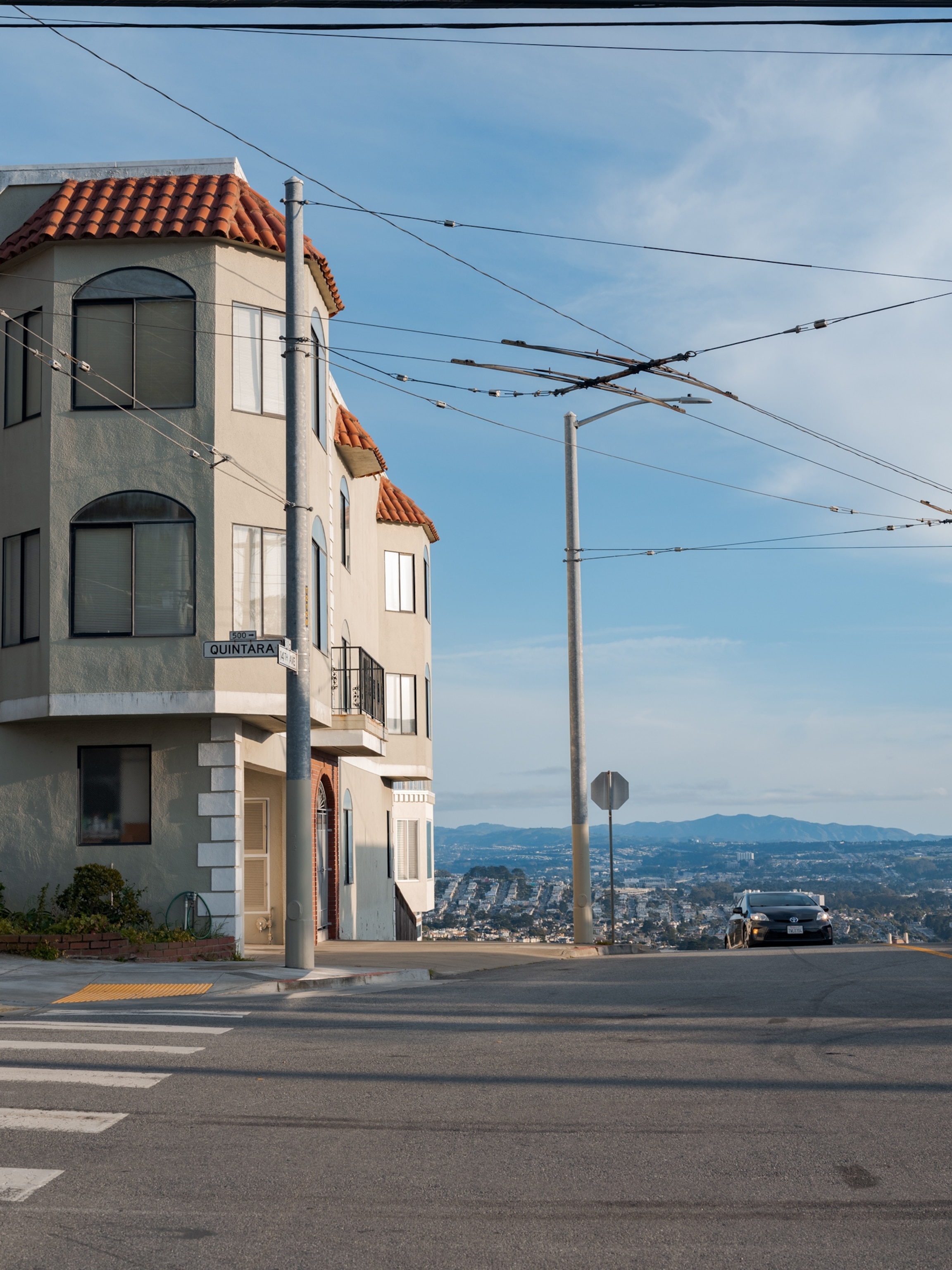


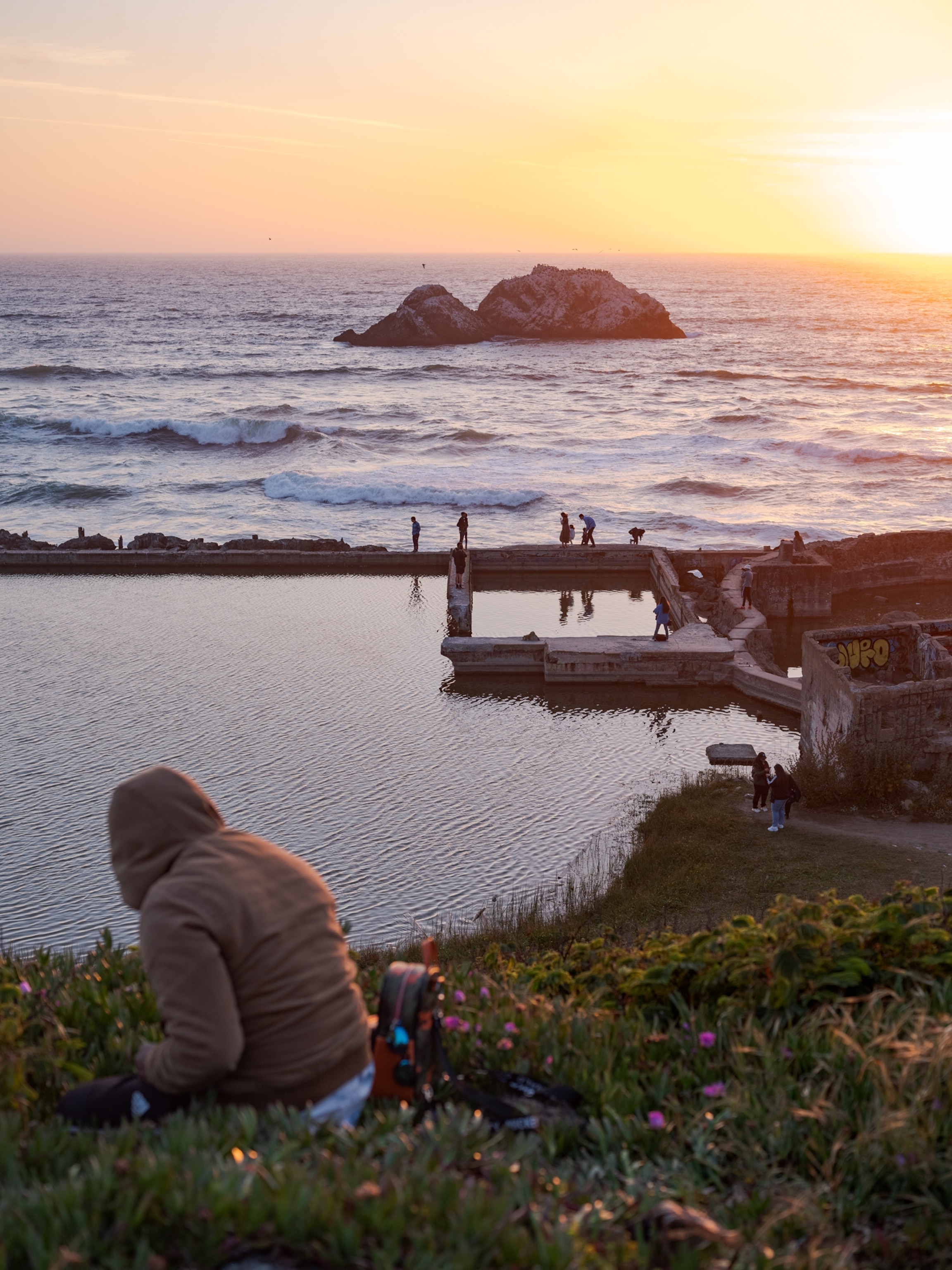
As I zigzagged my way through Visitacion Valley Greenway, a group of community gardens running six blocks uphill between houses, I was embarrassed to realize this was my first time visiting this part of town, despite San Francisco being such a compact city. Why had I needed the excuse of a new trail to get here?
From the top of the fragrant herb garden, I turned around and admired the greenery cascading below me. It was really just someone’s backyard, but something about being on a hike made me appreciate the view more than if I had arrived here by car. I was taking my surroundings in, instead of for granted.
(How did Alcatraz become a horticultural haven?)
Compared to the meticulously planned and designed High Line in Manhattan, the Crosstown Trail is a more grassroots affair. No famous landscape architect may have been involved, but you might run into neighbors bragging about their fruit trees, and plucking pink apples to share.
The small ravine in Glen Canyon Park was preserved against all odds thanks to neighborhood moms who fought against a freeway that would have destroyed it in the 1960s. Their legacy lives on in the name of the Gum Tree Girls Trail, which runs past rock climbing walls, playgrounds, and vegetable gardens.

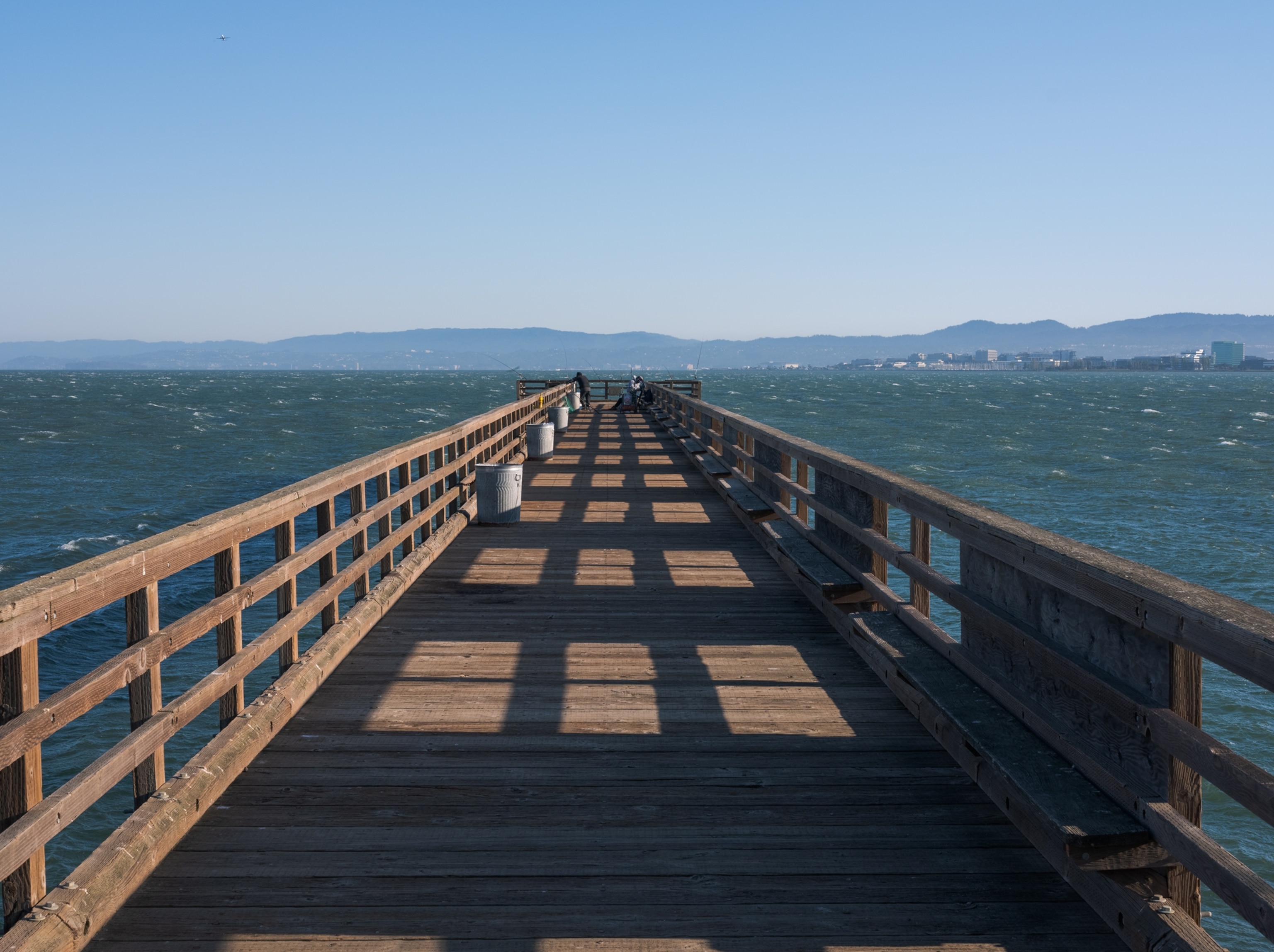
I meandered inside the three-mile-long Golden Gate Park, with its famous museums, botanical garden, knotty eucalyptuses, and buffalos—yes, live buffalos yawning and chewing cud on what might be the most expensive grazing ground in America. I passed by the pagoda of the Japanese Tea Garden and rested inside “Three Gems,” an outdoor installation by James Turrell that encourages viewers to look up through a round frame, turning the sky into an ever-changing piece of art.
Atlanta’s BeltLine may have had the much criticized effect of hiking up nearby real estate prices, but San Francisco’s already eye-popping housing costs are unlikely to be affected by the Crosstown Trail. In fact, without consulting a PDF map or an app, San Franciscans may not even know where the route goes.
Perks of an urban hike
Urban hikes are both pedestrian and remarkable. You pass by laundromats, apartment blocks, and subway stops. I was tempted more than once to jump on a passing bus to bypass what seemed like mundane stretches. I’m glad I didn’t. How else would I have happened upon Igor, the terse Russian frame maker who has been fitting paintings for decades in the garage of his pink cake-like Art Deco home?
(Explore some of America’s secret urban walks.)
Another perk of an urban hike: You’re never far from good grub. In the village-like district of Glen Park, I dove into an açai bowl and coxinha, a chicken croquette, at Pebble’s, a Brazilian family-run café. In the outer borough of the Sunset, I had my pick of regional cuisines on Irving Street, where I relished in fish and shiitake dumplings at Yuanbao Jiaozi, which specializes in food from China’s Dongbei Province. It seems I, too, was grazing like those buffalos.
The best part of an urban hike might be that it opens up wild hiking for people who would never have thought they were capable. For physical or economic reasons, access to the outdoors can be woefully limited in the U.S. By treating your home turf as a place worthy of a hike, you eventually realize hiking is really just walking mindfully, for the sheer pleasure of it.

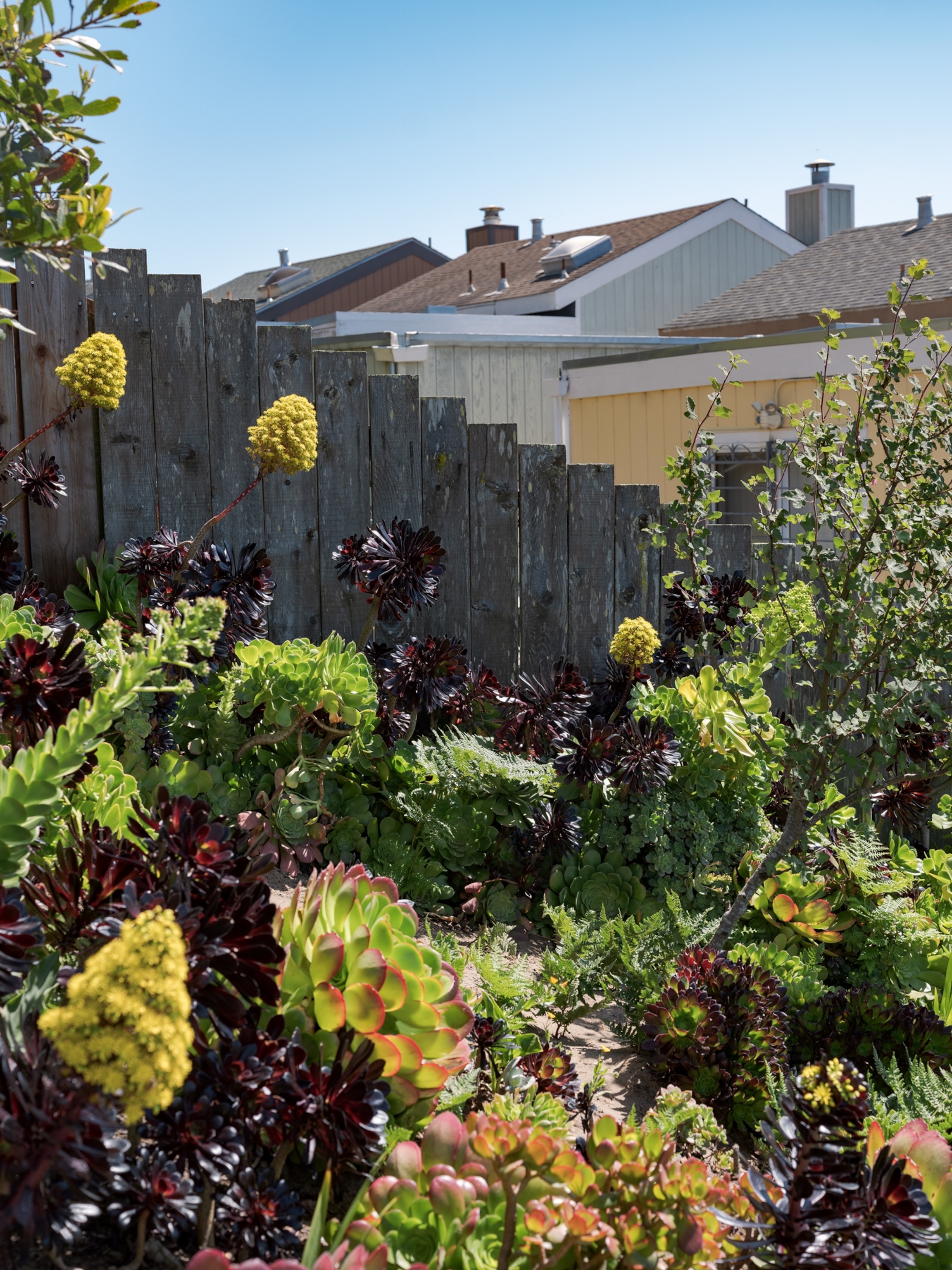
When you look at the map of San Francisco, the Presidio crowns the peninsula like a tiara—and rightfully so. This crown jewel of the city’s open spaces has lived many lives—from a 1776 Spanish military outpost to a public park of cliffs, beaches, and hairpin roads attempted only by cyclists with thighs of steel. The official Crosstown Trail doesn’t dip far into the 1,500-acre park, but I took a detour to sandy Baker Beach to look at the iconic Golden Gate Bridge from seal level.
(See millions of years of history while beachcombing San Francisco.)
Eight-and-a-half hours after I set out in the morning, I limped toward home. (Advice: Don’t wear hiking shoes when you’re pounding both dirt and asphalt. Sneakers will do just fine.) The tracking app on my phone told me I’d walked 19.28 miles, thanks to all the detours.
On the last stretch, in the aptly named Lands End park, thick fog shrouded the wind-slanted trees. Far below, the sea doused the ruins of the Sutro Baths, once a public saltwater pool. Living in an apartment on the last block before the ocean, I’d walked this stretch hundreds of times. But on that day, having seen the rest of San Francisco, the homecoming felt special. Turned out, the most beautiful part of the city had been my neighborhood all along.
Chaney Kwak is the author of The Passenger: How a Travel Writer Learned to Love Cruises & Other Lies from a Sinking Ship, published in June 2021.
Alessandra Sanguinetti is an American photographer and member of Magnum Photos. Her work often explores themes of memory, place, and youth. To see more of her work, follow her on Instagram.

